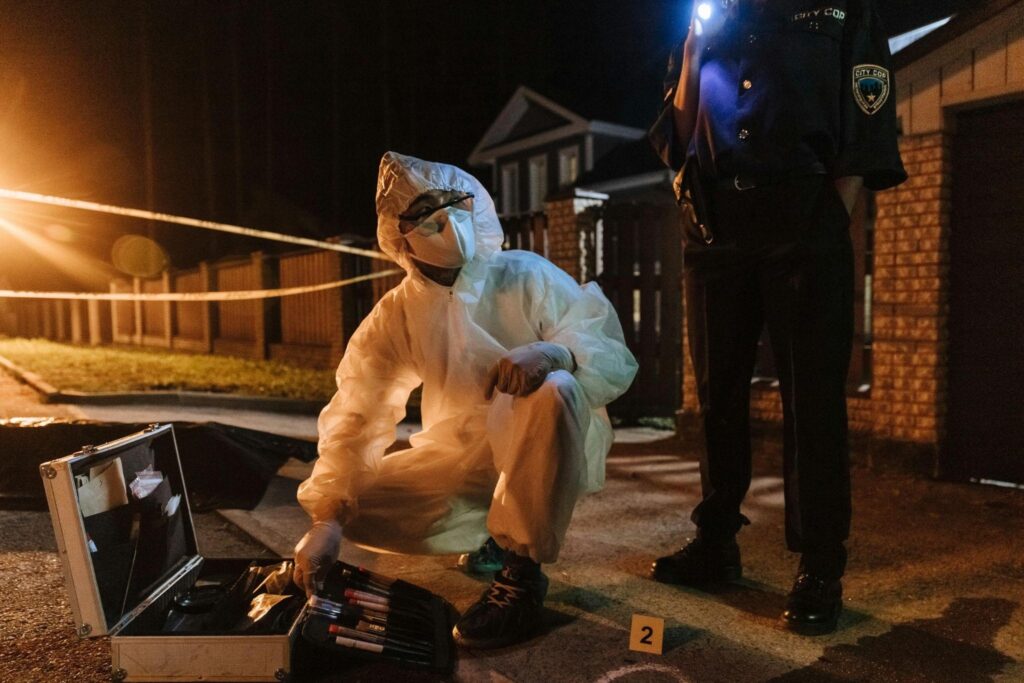1. Introduction
When it comes to trauma and crime scene cleanup jobs, it is more than just the act of cleaning the last physical evidence of a traumatic event. It is also a job filled with regulations, liability, and complicated safety. Regardless of whether you are a cleaner, property owner, or simply curious, understanding these laws can be both lifesaving and financially responsible. From legal certifications to proper disposal of biohazards, here is everything you need to know before entering a trauma site.
2. The Letter of the Law: Legal Must-Knows Before You Mop the Blood
Trauma and crime scene cleanup requires adherence to strict legal and safety rules to protect workers, the public, and the environment. For this reason, it is essential to follow the law and comprehend the essentials of crime cleaning.
Let’s have a look at the legal must-knows of crime cleaning:
● Licensed to Clean: Why Certification Isn’t Just a Formality
Most states require trauma cleanup businesses that handle biohazards to be certified, which includes demonstrating their training in public and individual health protection through OSHA Bloodborne Pathogens Standard compliance and possibly hazmat training.
● Walking the Legal Tightrope: State vs. Federal Guidelines
Federal agencies such as OSHA establish baseline regulations. However, many states provide additional rules. Some states require special business licenses and waste transport permits, or have additional reporting requirements.
● No Room for Error: Documentation That Covers Your Back
Comprehensive documentation, including before-and-after photos, site actions, and disposal records, is crucial for property owners to protect themselves from liability and demonstrate legal compliance to regulators and insurance companies.
● Know the Chain: Property Owner Rights & Law Enforcement Access
All technicians must adhere to access laws. Typically, the police must protect the scene until cleanup is formally released by them. Cleaners also want to receive expressed permission from the legal owners of the property when they are conducting a cleanup.
● Liability Landmines: What Happens If You Break the Rules?
Failing to follow legal clean-up procedures may result in lawsuits, loss of your license, or even criminal charges. Compliance with the law protects your business and the community you serve.
3. Blood, Sweat, and Safety Gear: Biohazard Protocols that Save Lives
Following Effective biohazard protocols is crucial for preventing the spread of infectious agents and protecting individuals from potential harm. These protocols encompass a range of practices, including proper use of personal protective equipment (PPE) and disposal of biohazardous materials.
Follow these protocols for the safety of your life:
● Put on or Pack it Up: Your PPE Checklist for Crime Scenes.
Personal Protective Equipment (PPE) is not a choice; it’s a lifesaver. In most trauma scenes, gloves, full-body suits, eye protection, and respirators are mandatory.
● The Biohazard Process: Handling & Disposing Waste the Right Way
Disposal of waste is not as easy as throwing away the garbage and waste that has soaked blood, sharps, and contaminated, soiled items must be packaged inside biohazard containers and then delivered to authorized facilities.
● Cleaning Isn’t Enough: The Science of Decontamination & Sanitization
Cleaning removes visible mess, but decontamination kills invisible threats. This involves EPA-registered disinfectants that target viruses, bacteria, and fungi.

4. Conclusion
Cleaning up a crime scene or trauma site is inherently stressful, as it is more than cleaning and decontaminating. It’s about compliance, compassion, and care. With licensing laws and decontamination means in place, each step was important. Now, whether you put together a crew or get certified yourself, make sure to know the rules, follow the protocol, and bring protection for the people affected, because there is no margin for error when cleaning trauma!
FAQs
Can anyone legally clean up a crime scene?
No, in many states, only certified professionals can clean biohazard scenes legally. Professionals must comply with OSHA rules, carry proper licenses, and document every step.
What certifications are required for trauma cleanup?
Trauma cleaners must often be OSHA Bloodborne Pathogen Standard certified and may need hazmat training, depending on the state.
Who pays for trauma or crime scene cleanup?
Typically, the property owner is responsible. However, homeowners’ insurance may cover some or all of the costs. Always document everything to assist with claims and reimbursements.
Are trauma cleaners exposed to health risks?
Yes, trauma cleanup exposes workers to bloodborne diseases, sharp objects, chemicals, and emotional trauma.
How long does a trauma or crime scene cleanup take?
It varies based on the scene. A small room might take a few hours, while a large or particularly contaminated site can take days.
